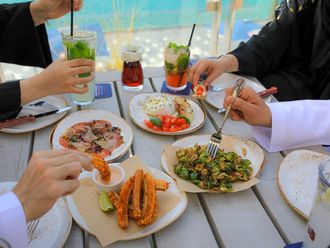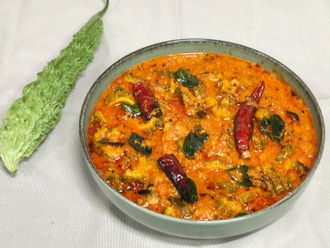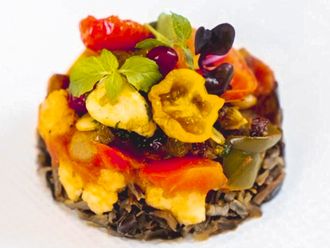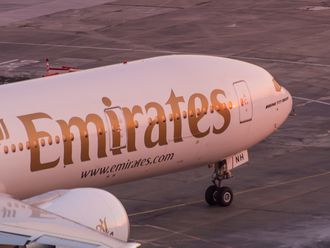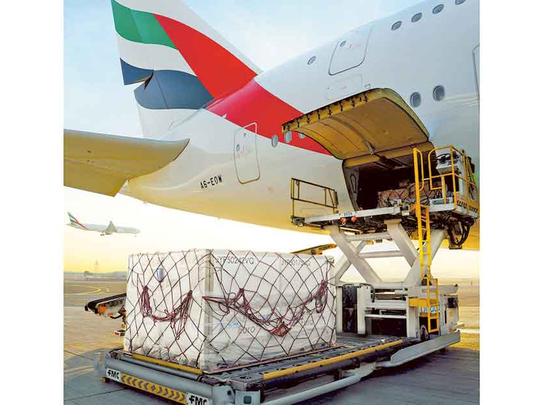
The seasonality of fresh food in most parts of the world has become a thing of the past, primarily due to the rapid development of food transport and storage supply chains across world markets.
However, nearly half of all food grown globally never makes it to a consumer’s plate, the US Department of Commerce estimated last year. Annual food industry losses add up to more than $750 billion (Dh2.7 trillion) primarily due to the lack of proper facilities, low-grade food handling and inefficient cold chains.
Exotic appeal
“Consumers in the region are seeking to enrich their palate with exotic fruit, fresh vegetables, delicious seafood, meat and other produce from different parts of the globe throughout the year to experience various international flavours in their own homes,” says Henrik Ambak, Senior Vice-President of Cargo Operations Worldwide at Emirates SkyCargo.
With a network of more than 150 destinations across 83 countries, the company brings to the UAE such diverse produce as fresh vegetables and salad from the Netherlands, lobsters from Boston, mangoes from India and Pakistan, meat from Australia and seasonal fruits from Los Angeles.
Cold chain systems are critical to the success of this international trade in perishable products — whether food or health supplies. Massar Solutions, a vehicle rental, fleet and supply chain management company, estimated last year that $3.53 million worth of food is wasted in the UAE on an annual basis.
The country imports more than 80 per cent of its food and is positioned at the centre of a $9.4-billion market serving the GCC and Africa. Nearly half of the country’s total food imports are re-exported within the GCC, but up to 32.7 per cent of the ten million tonnes mobilised could be wasted every year.
Global warming
Food waste also directly impacts environmental sustainability due to proportionate wastage of water and other natural resources that support growth and cultivation. Conversely, logistics firms that do not follow high standards of energy management in cold chain transport, storage and handling increase the risk of global warming by inefficient cooling.
Refrigerants such as chlorofluorocarbons, and to a lesser extent, hydrochlorofluorocarbons and hydrofluorocarbons, are all potent greenhouse gases that emit dangerous radiation and can lead to global warming if released into the atmosphere through leaky equipment.
Over the past few years, the sector has seen a surge in investments and expansions. Last year, Dubai-based RSA Logistics announced the launch of RSA Cold Chain (RCC).
The venture expects to begin operations next month, with an initial capacity of 10,800 pallets coupled with end-to-end third-party logistics services for packaged food, fresh fruit and vegetables, as well as dairy products and frozen food. RCC believes there is enough demand for it to host up to 21,000 pallets.
“With ongoing investment in cold chains and new players emerging, we’ve seen an increase in enquiries for small and medium sized storage units with cold storage and refrigeration,” Arun George, Senior Surveyor at consultancy Knight Frank Dubai, explained in a 2015 report.
Potential solutions
Dubai-based food supplier 4corners and the Emirates Academy of Hospitality Management undertook a six-month study last year to examine how the environmental impact of procurement and delivery could be reduced.
Using the resulting data to design its supply chain, 4corners now claims that it can reduce the carbon footprint from food and beverage logistics by 90 per cent.
Emirates SkyCargo meets the challenge with solutions such as White Cover, a protective product designed to shield temperature-sensitive cargo from solar heat during transportation. “It is water-resistant, yet breathable, ideal for food products, environmentally friendly and 100 percent recyclable,” Ambak says.
While commenting on what lies ahead for this segment, he explains, “We see a spread in countries and in the types of food joining the airborne food supply chain. Norwegian transport of salmon is old news; now just about every country has one or several kinds of foodstuff participating in this trade.
“An additional challenge is to develop and offer ever more cost-effective solutions that allow for the quick airborne transportation of foodstuff while keeping the resulting cost affordable.”
As UAE residents continue to increasingly enjoy the privilege of fresh food on demand regardless of seasonality, the sector is expected to continue growing. However, its success is delicately balanced between being able to reduce food wastage and thereby the pressure on natural resources, and the direct impact refrigeration has on the release of greenhouse gases.
A Dh1.4tn market
The global cold chain market could reach $381.68 billion (Dh1.4 trillion) by 2025, a report from Grand View Research forecasts. And market growth is expected at 11.18 per cent from 2016 to 2020, according to 360 Market Updates. Both reports were released this month. Much of the growth comes from emerging markets such as India and Brazil.
The market’s potential is visible at Gulfood, the annual food and beverage trade fair that begins today in Dubai. With more than 5,000 suppliers of raw materials and ingredients from 120 countries attending, the fair shows how the globalisation of palates is driving an upsurge in cold supply chain business.







